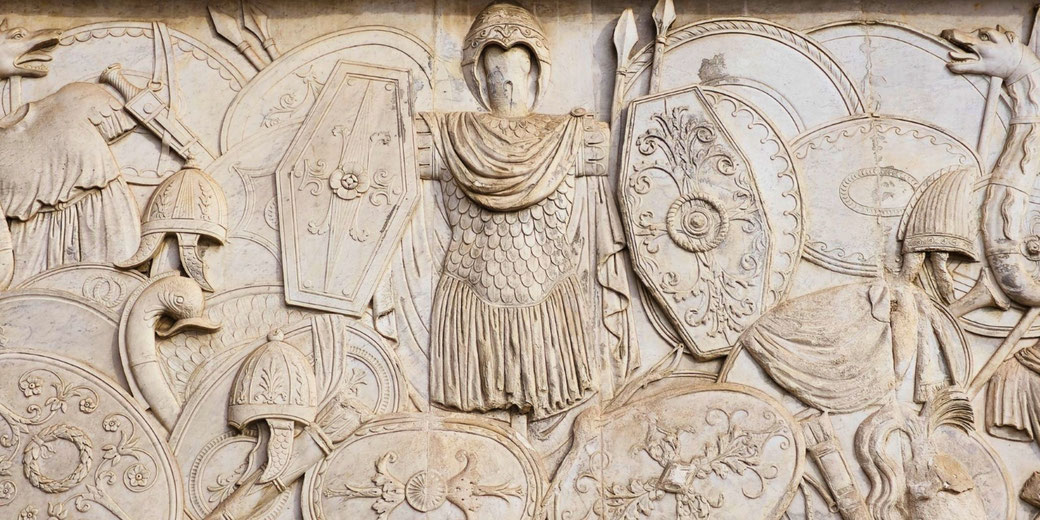Teutoburg: The Roman Empire’s worst military disaster?

The year was 9 AD, and the Roman Empire was at the height of its power. Under the leadership of Emperor Augustus, the Empire had expanded its borders to include much of Europe, the Middle East, and North Africa.
But a catastrophic military defeat in the forests of Germania would forever alter the course of Roman history.
What happened?
The Battle of Teutoburg Forest, also known as the Varian Disaster, was fought between the Roman Empire and a coalition of Germanic tribes led by the warrior Arminius.
Almost 20,000 Romans, led by Publius Quinctilius Varus, were marching through the dense forests of modern-day Germany, intent on subjugating the local tribes and expanding their empire even further.
But they were ill-prepared for the guerrilla warfare tactics of the Germanic tribes. Arminius, who had been trained as a Roman soldier and was fluent in Latin, had infiltrated the Roman army and was secretly leading the Germanic forces against his former comrades.
In the forests of Teutoburg, the Germanic warriors ambushed the Roman army, launching a surprise attack that would prove to be devastating.
Why were the Romans massacred?
The Romans were caught off guard, and their heavy infantry and cavalry were unable to maneuver effectively in the dense forests.
The Germanic tribes, on the other hand, were skilled in guerrilla warfare, and they used their knowledge of the terrain to great advantage.
The Romans were repeatedly ambushed and picked off by the Germanic warriors, who attacked from all sides with javelins, spears, and swords.
Despite being heavily outnumbered, the Germanic tribes were able to inflict heavy casualties on the Romans. Varus himself was killed, along with many of his top commanders.
The Roman army was effectively destroyed, three precious golden eagle legionary standards were lost.
The survivors were forced to retreat back to their forts along the Rhine River.

Rediscovering the site of the battle
The exact location of the battle was not known until the 20th century, when historians identified the Kalkriese Hill, near the town of Bramsche in modern-day Germany, as the likely site of the battle.
Excavations at Kalkriese Hill have since revealed a wealth of archaeological evidence that supports the idea that this was the site of the battle. In the early 1990s, a team of archaeologists led by Dr. Wolfgang Schlüter began excavating the site and uncovered a number of artifacts that provide clues to what happened during the battle.
One of the most important discoveries was a large number of Roman military artifacts, including arrowheads, spears, swords, and fragments of armor. These artifacts suggest that the Roman army was well-equipped and heavily armed.
The archaeologists also found evidence of Roman fortifications, including trenches and a palisade, which suggest that the Romans were attempting to create a defensive position.
The archaeologists also found evidence of Germanic military artifacts, including javelins, spears, and sling stones. The distribution of these artifacts suggests that the Germanic tribes were using hit-and-run tactics and attacking the Roman army from multiple directions.
How was the news received in Rome?
The Battle of Teutoburg Forest was a turning point in Roman history. It marked the end of the Roman Empire's expansion into Germania, and it shattered the myth of Roman invincibility.
The defeat was so devastating that Emperor Augustus is said to have cried out, "Varus, give me back my legions!"
The defeat at Teutoburg Forest also had political consequences. Augustus, who had been in power for over 40 years, began to focus more on securing his legacy and consolidating his power, rather than expanding the empire.
The defeat also led to a reevaluation of the Roman army's tactics and strategies, and it helped to shape the way the Romans fought future wars.
Today, the Battle of Teutoburg Forest is still remembered as one of the greatest military disasters in Roman history. It was a moment when the mighty Roman Empire was humbled by a coalition of determined Germanic tribes, and it served as a warning to future empires that no matter how powerful they may be, they are never invincible.
What do you need help with?
Download ready-to-use digital learning resources
Copyright © History Skills 2014-2025.
Contact via email
With the exception of links to external sites, some historical sources and extracts from specific publications, all content on this website is copyrighted by History Skills. This content may not be copied, republished or redistributed without written permission from the website creator. Please use the Contact page to obtain relevant permission.





